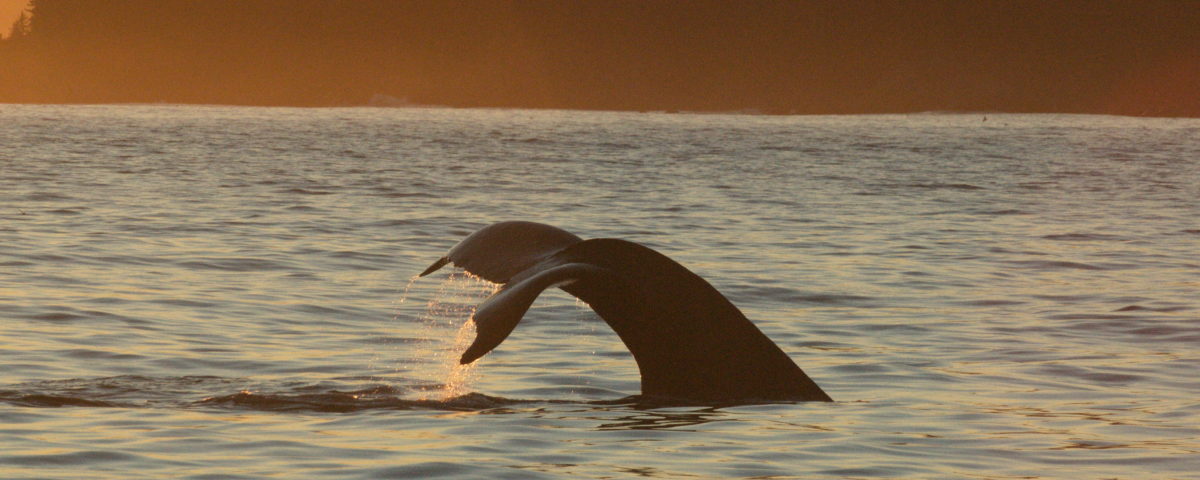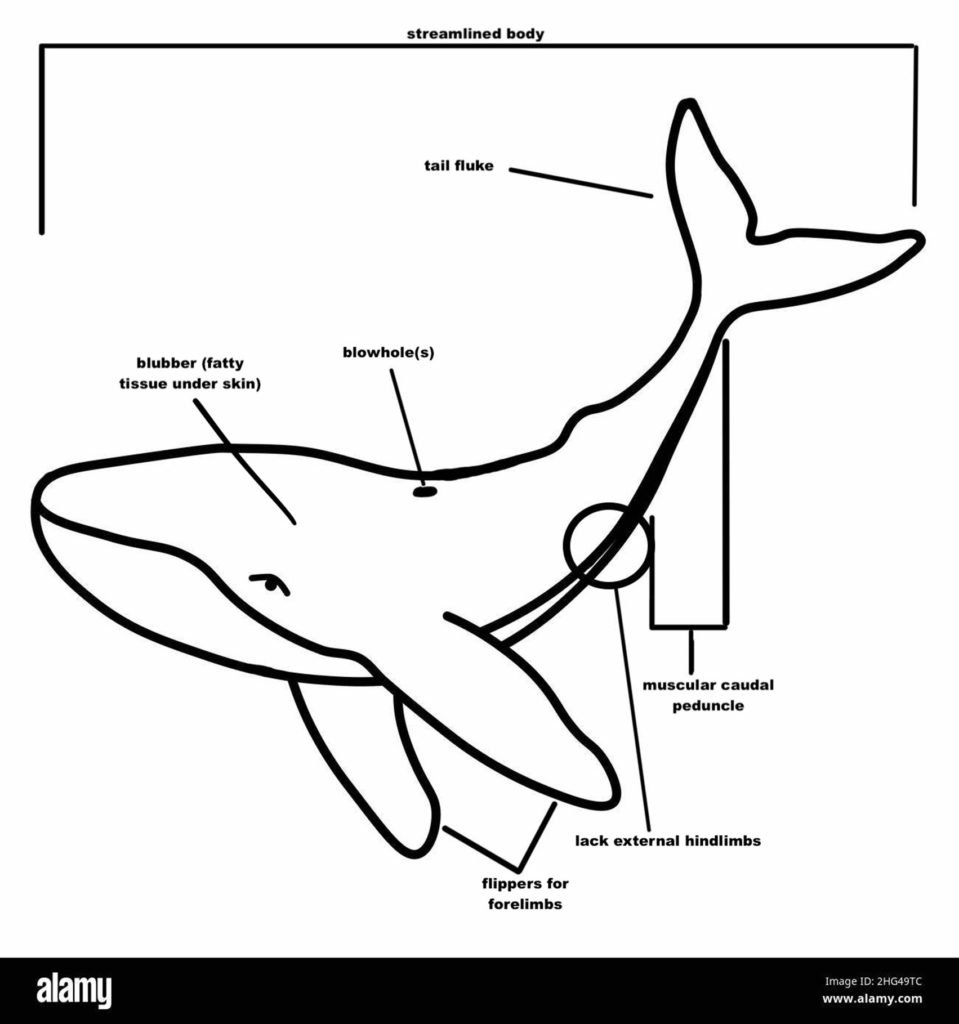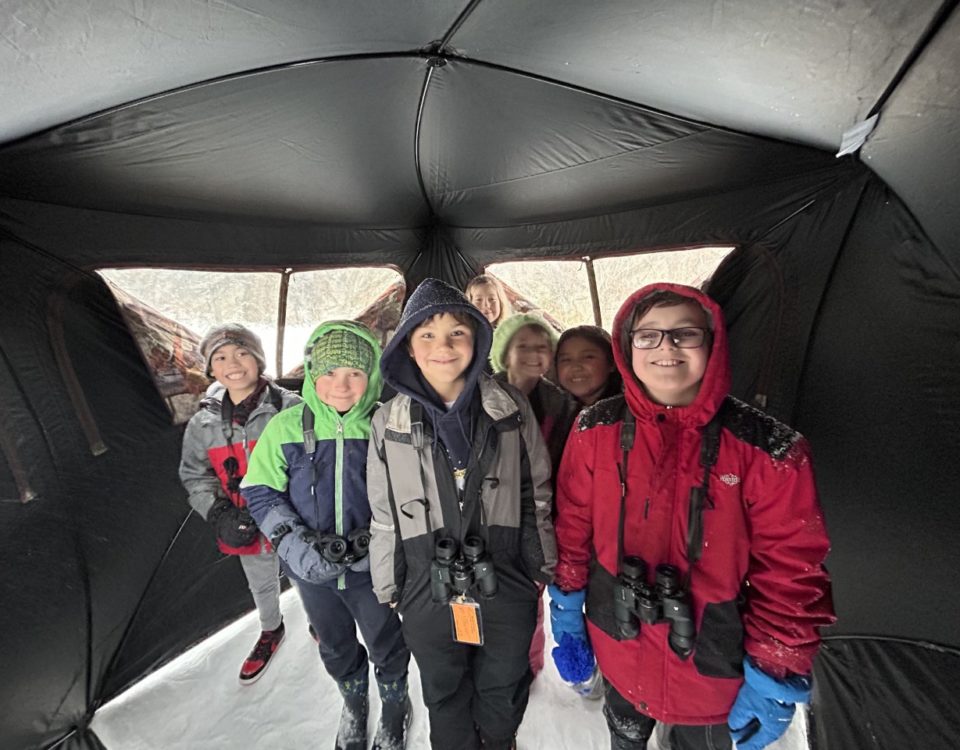Big news! January is whale month

January 2023
Prince William Sound is home to many creatures great and small. We, at the Prince William Sound Science Center, are happy to share with you a majestic order of mammals: Cetacea, which includes whales, dolphins, and porpoises. There are certain characteristics that all cetaceans share (see figure below) including a streamlined body, blubber, flippers for forelimbs, and a muscular caudal peduncle. There are many different species of cetaceans found in Prince William Sound including humpback whales, killer whales, and Dall’s porpoises. Cetacea has two suborders: Mysticetes (baleen whales) and Odontocetes (toothed cetaceans).

All Mysticetes have hundreds of overlapping baleen plates in their upper jaw, instead of teeth. Baleen is made up of the protein keratin. Baleen plates can be 2-12 feet long and are used to filter feed. Baleen whales feed by opening their mouths wide, pulling in water and food, then closing their mouths. They will spit out the water, swallow the food, and use their tongues to scrape off any food that may be caught on the hairs attached to the baleen. Another distinguishing factor of the suborder Mysticetes is that they have two blowholes, while the other cetaceans only have one.
Humpback whales are a type of baleen whale seen in the Prince William Sound. They are up to 45 feet long, with females being larger than males. Humpback whales are known for their acoustic songs. Only the male humpback whales are responsible for these songs. Humpback whale mouths are one-third the size of their bodies. They feed on krill and small forage fish like herring. Humpback whales of the Pacific Northwest only feed while in their feeding grounds around Alaska.
Odontocetes have teeth and a single blowhole, distinguishing them from Mysticetes, or baleen whales. The suborder Odontocetes includes toothed whales, dolphins, and porpoises. Another distinguishing factor about this suborder is that they all use echolocation to locate prey. Echolocation is a form of hearing in which an animal produces a sound and waits for the returning sound waves or echo. This allows the animal to orient itself or locate objects nearby. We can find many members of this suborder in the Prince William Sound including Dall’s porpoises and killer whales.
Dall’s porpoises are thought to be the fastest small cetacean. They reach speeds up to 35 miles per hour, which is the same as a killer whale. Dall’s porpoises get to that speed much quicker than killer whales, but killer whales can maintain that speed much longer. Dall’s porpoises swim in fluid groups which can sometimes be seen bow-riding marine vessels. When surfacing, they create a distinguishable rooster tail of spray. They feed mainly on squid and schooling fish.
Despite their name, killer whales are members of the dolphin family, or Delphinidae. Killer whales are the largest member of the dolphin family. A male orca, on average, is 26 feet long, and a female is 23 feet long. Killer whales follow a hierarchy, with adult females at the top. Female killer whales can live to be over 80 years old. They outlive males by upwards of 30 years. Killer whales can be separated into ecotypes: resident, transient, and offshore. The resident killer whales forage on fish, mainly salmon, and can be found in waters from California to Russia. The transient killer whales hunt marine mammals and squid, and can be found in coastal waters. Offshore killer whales eat fish, including sharks, and can be found up to nine miles off shore.
At PWSSC, we are excited to share with you many of the cetaceans that live in Prince William Sound. Stay tuned with our social media pages to learn more about these majestic creatures over the month of January.

Whale tail photos by John Moran, NOAA NMFS Permit Permit No. 18529




